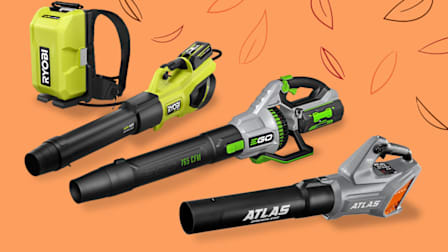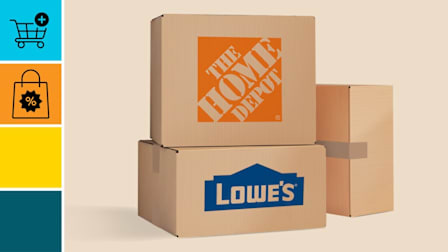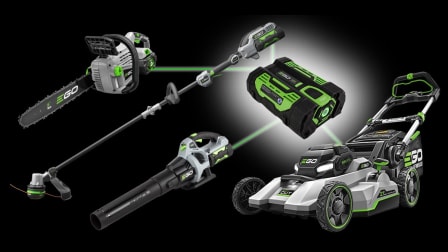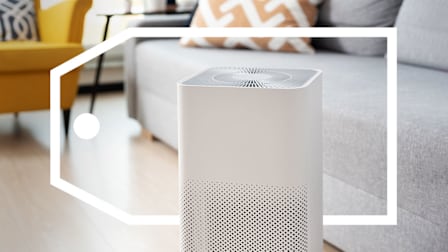Best Leaf Blowers of 2025
We tested scores of models on thousands of pounds of leaves to find the top performers for a yard of any size
When you shop through retailer links on our site, we may earn affiliate commissions. 100% of the fees we collect are used to support our nonprofit mission. Learn more.

In searching for a leaf blower, you might have seen units like miles per hour (mph) or cubic feet per minute (cfm) popping up in retailers’ descriptions. While those acronyms may seem impressive on paper, our tests show the numbers don’t always correlate with how well each model moves leaves and other debris.
That’s why we collect and blow through thousands of pounds of leaves every year: to determine how each leaf blower will perform in your yard. And we regularly review our testing procedures and rating charts to keep up with fresh questions from consumers. For instance, we now have a separate score for run time in our ratings of battery-powered leaf blowers, and we’ve added a power score to make it easier to see how each model will do on tough jobs like moving pine cones and twigs and clearing gutters.
- Best Leaf Blowers: Handheld Backpack Wheeled
- How CR Tests Leaf Blowers
- How We Pick the Best Leaf Blowers
Best Handheld Leaf Blowers
Whether they’re electric or gas, handheld leaf blowers are best for smaller properties with only a few leafy trees. Electric handhelds can be corded or battery-operated. To pick the best handheld models, we favor lighter models over heavier ones (if all other factors are equal), because weight has a noticeable effect on ease of use and maneuverability.
Corded Electric Handheld Leaf Blowers
Battery Handheld Leaf Blowers
Gas Handheld Leaf Blowers
Best Backpack Leaf Blowers
Backpack leaf blowers are helpful for larger properties with more trees, including those with hilly yards, where a wheeled blower would be tough to maneuver. Beyond the main criteria we test for (sweeping, loosening, power, handling, and noise), we also evaluate how easy and comfortable these models are to strap on and how easy they are to maneuver once they’re on your back. Our experts recommend trying on a backpack leaf blower before you buy.
Battery Backpack Leaf Blowers
Gas Backpack Leaf Blowers
Best Wheeled Leaf Blowers
Wheeled leaf blowers are designed for large yards. They’re expensive and usually noisy, though a few models are surprisingly quiet. Note: Wheeled blowers can’t vacuum or shred, and they require about 8 square feet of storage space.
How CR Tests Leaf Blowers
We test handheld, backpack, and wheeled leaf blowers. Some years, we blow through 2,500 pounds of leaves in the process. Because we can’t rely on that quantity of leaves falling on our Yonkers, N.Y., campus each autumn, we often start collecting and storing fallen foliage a year in advance.
To make sure we use the same quantity of leaves to test each model, CR’s test engineers rope off a standardized swath of grass and dump bags of leaves inside the boundary. We time how long each blower takes to clear the pile and whether the tool moves every last leaf. Some leaf blowers struggle by the time we reach the bottom of the pile, where leaves can get embedded in the grass. To see how well leaf blowers loosen debris, our technicians embed grasslike synthetic turf with sawdust and rice. We weigh the turf before and after to determine just how much the leaf blower was able to clear in a set amount of time. Each leaf blower goes through four rounds of tests.
To test the strength of a leaf blower’s airflow, we conduct what’s called a “ball rise” test. We direct the leaf blower’s air through a vertical tube and measure how high the leaf blower’s air can lift two dimpled batting cage balls (the two balls together help create a stable height reading).
We also note how difficult it is to maneuver each leaf blower, how heavy it feels, and how intuitive the controls are.
How CR Picks the Best Leaf Blowers
High-quality options exist in every category, says David Trezza, who oversees leaf blower testing at Consumer Reports. The best leaf blowers in our ratings have the following in common.
They’re fast at moving leaves. The best blowers in our tests clear a large swath of grass in under a minute.
They’re good at loosening embedded leaves from the lawn. Even with a leaf blower that’s quick to move most leaves, you’ll notice a few stragglers. We look for machines that don’t require you to break out a rake to clean up.
They’re powerful. A high score means the leaf blower produces a greater force (typically with a higher airflow) than most models. A powerful leaf blower will move pine cones, twigs, or other debris, and can do the job of clearing gutters.
They’re easy to handle. We consider weight, the placement of the controls, and ease of starting to find models that start and run effortlessly. We also favor models that are light and easy enough to use that you won’t end up with sore arms.
They’re not too loud. We test sound both at the ear of the operator and from 50 feet to simulate how loud each blower might be for you and your neighbors. The best models keep the volume below 65 decibels, while the worst exceed 85 decibels. At 85 decibels, you’ll need ear protection to avoid hearing damage even from very brief use. At lower decibel levels, hearing protection is often still a good idea, especially if you’re using a leaf blower for a long stretch of time.
They’re reliable. Each year, we survey thousands of CR members to provide brand-level reliability and owner satisfaction scores to predict which leaf blowers will continue to work well long after their first autumn.
Leaf Blower FAQs
Here are some of the most asked questions when it comes to shopping for a leaf blower. To learn more about how to shop for a leaf blower, see our leaf blower buying guide.
What’s the Best Type of Leaf Blower to Buy?
It largely depends on your yard and your comfort level.
- If you have a small yard with a few trees, a corded or battery-powered electric blower might work best.
- If you have quite a few trees packed into a small lot, you might prefer a gasoline handheld blower for its longer run time, though having a second battery charged and ready to go can also double the run time of battery models.
- For a bigger yard, or if you struggle to hold a handheld blower for long stretches—most weigh 8 to 15 pounds—consider a backpack blower. Battery backpacks are quieter and cleaner, while gas models continue running as long as you keep adding fuel.
- If you have a massive and relatively flat yard surrounded by woods, a wheeled leaf blower lets you cover a large area in minimal time, and you can blow leaves into the woods around your property.
Are Battery-Powered Leaf Blowers Worth It?
In short: Yes. Years ago, cordless leaf blowers were little more than overpriced novelties, designed to comply with rigorous local noise regulations. But that’s no longer the case. Today’s battery leaf blowers can match or even beat the performance of gas models. If you’re interested in a battery model, see our roundup of the best cordless leaf blowers.
What MPH or CFM Output Should a Leaf Blower Have?
Manufacturers often try to convey the power of a machine by measuring airflow in miles per hour or cubic feet per minute. These figures can be useful, but on their own, they don’t provide enough information to indicate how well a model will move leaves.
What does matter is design. You can have a leaf blower producing hurricane-force winds, but if the tool can’t effectively channel that force into an airstream that loosens and sweeps leaves, that power is irrelevant. Instead of relying on these figures, look at the sweeping and loosening scores in our ratings to see how well a tool tackles the thing that matters most: clearing leaves.
































